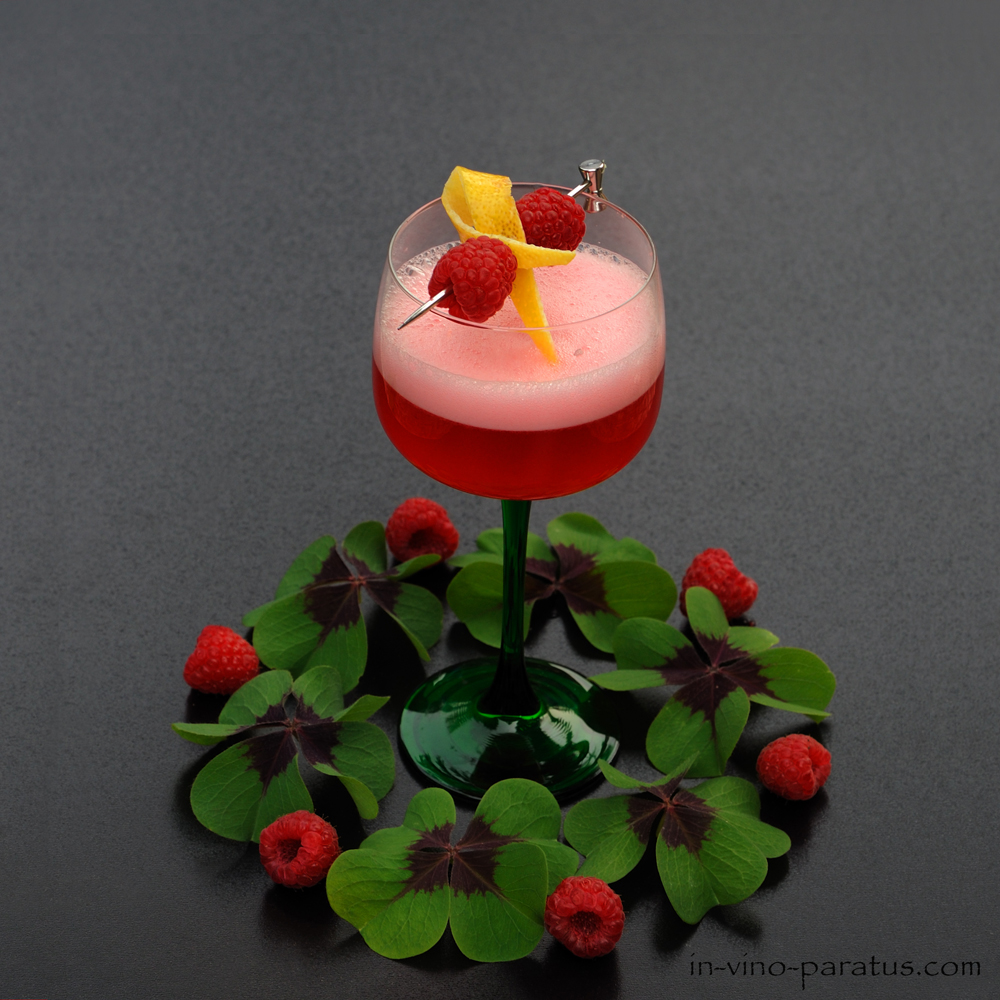
Behold, another entrancing member of the gin-sour cocktail family, a category that I hold dear. Now, let not its striking pink hue and delicate foamy crown deceive you. This cocktail, originally crafted by and for gentlemen, exudes strength and tartness. Yet, do not be misled, for these qualities do not preclude its appeal to the fairer sex; I, for one, am a fervent admirer.
In the late 19th century, a distinguished gentlemen’s club emerged, welcoming prominent lawyers, politicians, and writers into its fold. This exclusive enclave, known as the Clover Club, convened monthly at the Bellevue-Stratford Hotel in Philadelphia. Here, amid fine dining, libations, and camaraderie, friendships were forged and ideas exchanged. To honor its esteemed members, a cocktail bearing the club’s name was devised. While the exact origins of this libation remain shrouded in the annals of history, by 1910, the Clover Club cocktail had garnered recognition not only within the hallowed halls of the Clover Club itself but also far beyond the city limits of Philadelphia. The recipe even graced the pages of a cocktail book in 1917.
However, by 1917, two different publications were suggesting distinct syrups: one prescribed raspberry syrup, while the other leaned toward grenadine (pomegranate syrup). Both variants have coexisted since the cocktail’s inception, each with its own legitimate claim.
The original recipe also included dry vermouth but soon relegated it to optional status. For instance, in the IBA (International Bartenders Association) recipe, vermouth is conspicuously absent. On the flip side, its inclusion is not forbidden.
In the latter half of the 20th century, the Clover Club cocktail, along with other classic concoctions, faded into obscurity due to the effervescent rise of ready-made cocktail pre-mixes. At a time when patrons sought swift libations, a relatively intricate cocktail demanding specific preparation steps struggled to survive.
Nevertheless, the modern revival of this esteemed classic, along with other compelling cocktails from the early 20th century, has breathed new life into the Clover Club cocktail.
Allow me to impart a few details regarding the formation of the foamy crown and the unique mixing requirements of cocktails containing egg white. Egg white serves a dual purpose in these libations, acting as an emulsifier and contributing to the formation of a luxurious foam cap. However, the presence of ice can impede foam formation. Consequently, cocktails containing egg white necessitate longer and more vigorous shaking than their counterparts. This extended shaking can lead to ice melting and dilution. To mitigate this, it is recommended to mix cocktails with egg white in two stages: first, dry mixing (without ice) for approximately 15 seconds to generate the desired foam; then, with ice, continue shaking for an additional 30 seconds to achieve the desired chill.
Ingredients:
-1 1/2 oz/ 45 ml London Dry Gin
-1/2 oz/15 ml raspberry syrup or grenadine
-1/2 oz/15 ml fresh lemon Juice
-1/2 oz/15 ml egg white (about half of medium egg white)
Process:
Pour all the ingredients into a cocktail shaker without ice and vigorously shake for about 15 sec. Add ice and shake another 30 sec. Strain into the chilled cocktail glass and enjoy.
Garnish – fresh strawberry or/and lemon zest.
Drinkware:
Cocktail glass
Visit my online store for a unique poster featuring this cocktail, along with many other beautiful cocktails and other wine-related subjects.
It’s the perfect way to add a touch of sophistication to your kitchen or bar. Click here to shop now!